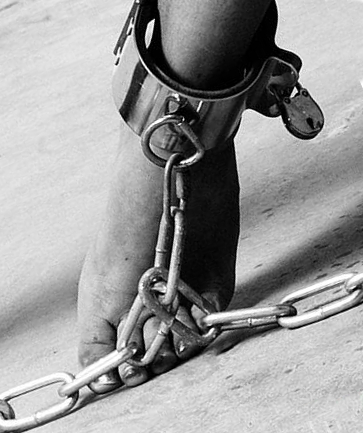Study says slavery lives worldwide
 More than 36 million people are bound by slavery worldwide, a new report says, forced to live and work around the whims of their owners.
More than 36 million people are bound by slavery worldwide, a new report says, forced to live and work around the whims of their owners.
The Walk Free Foundation - an Australian-based human rights group - has released its second annual slavery index, which shows that 35.8 million are enslaved to other people.
The tally includes those born into servitude, trafficked for sex work, trapped in debt bondage, exploited for forced labour in factories, farms and mines, and forced into marriage or war.
India has by far the greatest number of slaves; about 14.3 million of its population of 1.25 billion people are victims of slavery.
India’s ‘caste’ system has for centuries allowed those on the lowest tier to be enslaved and abused.
Mauritania has the highest proportion of slaves per capita, and operates under a similar social structure to India’s. About four per cent of Mauritania’s population of 3.9 million are slaves, the report said.
“From children denied an education by being forced to work or marry early, to men unable to leave their work because of crushing debts they owe to recruitment agents, to women and girls exploited as unpaid, abused domestic workers, modern slavery has many faces,” the report said.
“It still exists today, in every country - modern slavery affects us all.”
In Uzbekistan, with the world’s second highest proportion of enslaved citizens, thousands are forced to pick cotton to meet state-imposed quotas.
In Haiti, the children of poor people are often sent to live with rich acquaintances or relatives, creating an environment that routinely leads to abuse and forced labour.
The report ranked Qatar as having the world’s fourth-highest rate of slavery; a number that has shot up since it started shipping in migrants to build mega-projects such as soccer stadiums for the 2022 World Cup.
“Every country in the world apart from North Korea has laws that criminalise some form of slavery, yet most governments could do more to assist victims and root out slavery from supply chains,” Walk Free Foundation's head of global research, Fiona David, said.
“What the results show is that a lot is being done on paper but it's not necessarily translating into results,” Ms David said.
“Most countries got 50 per cent or less when we looked at the strength of their victim assistance regime.
“It's also striking that ... out of 167 countries we could only find three (Australia, Brazil and the United States) where governments have put things in place on supply chains.”
The following two films give a glimpse pf the level and style of slavery in Africa and North Korea.







 Print
Print